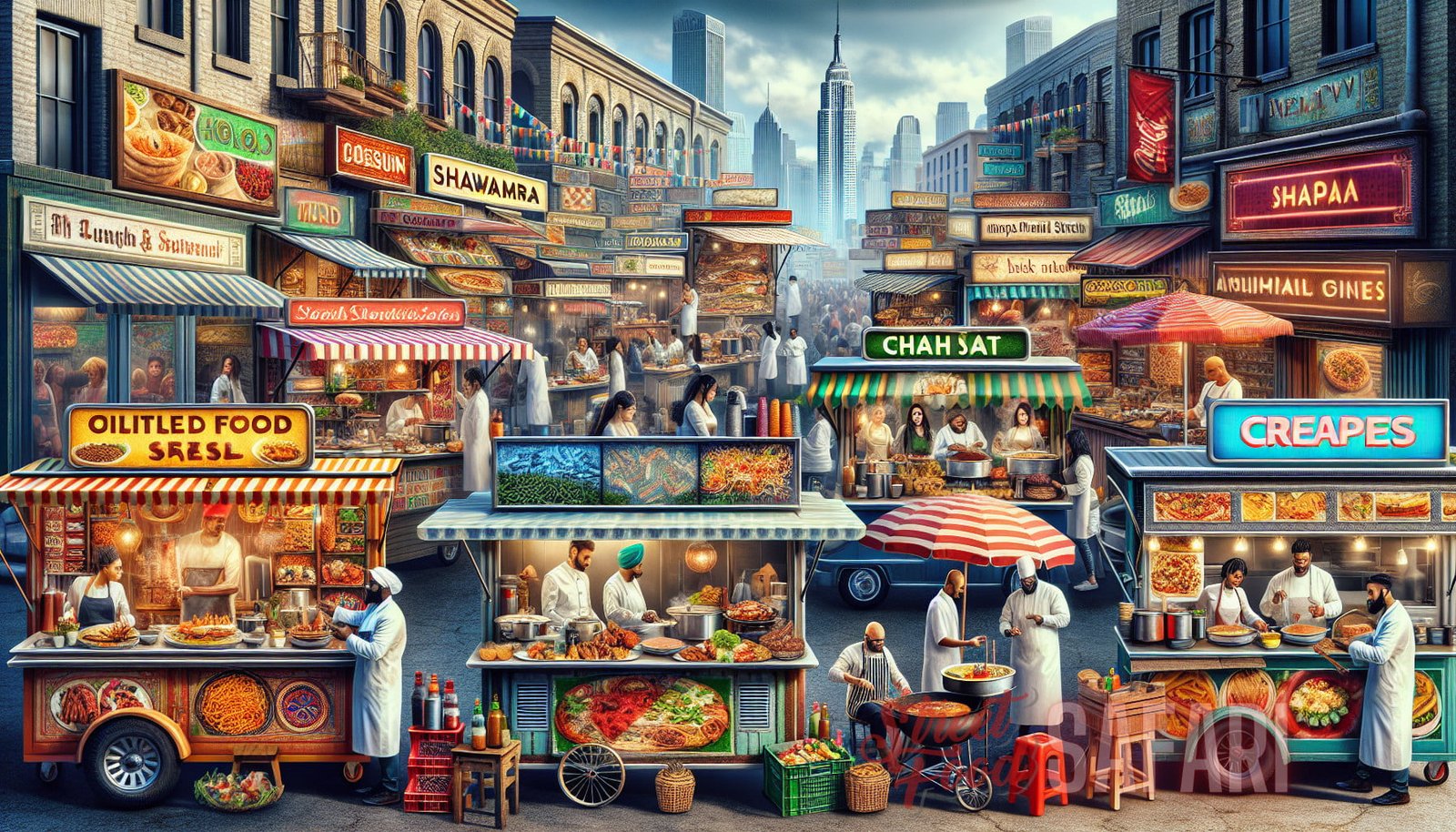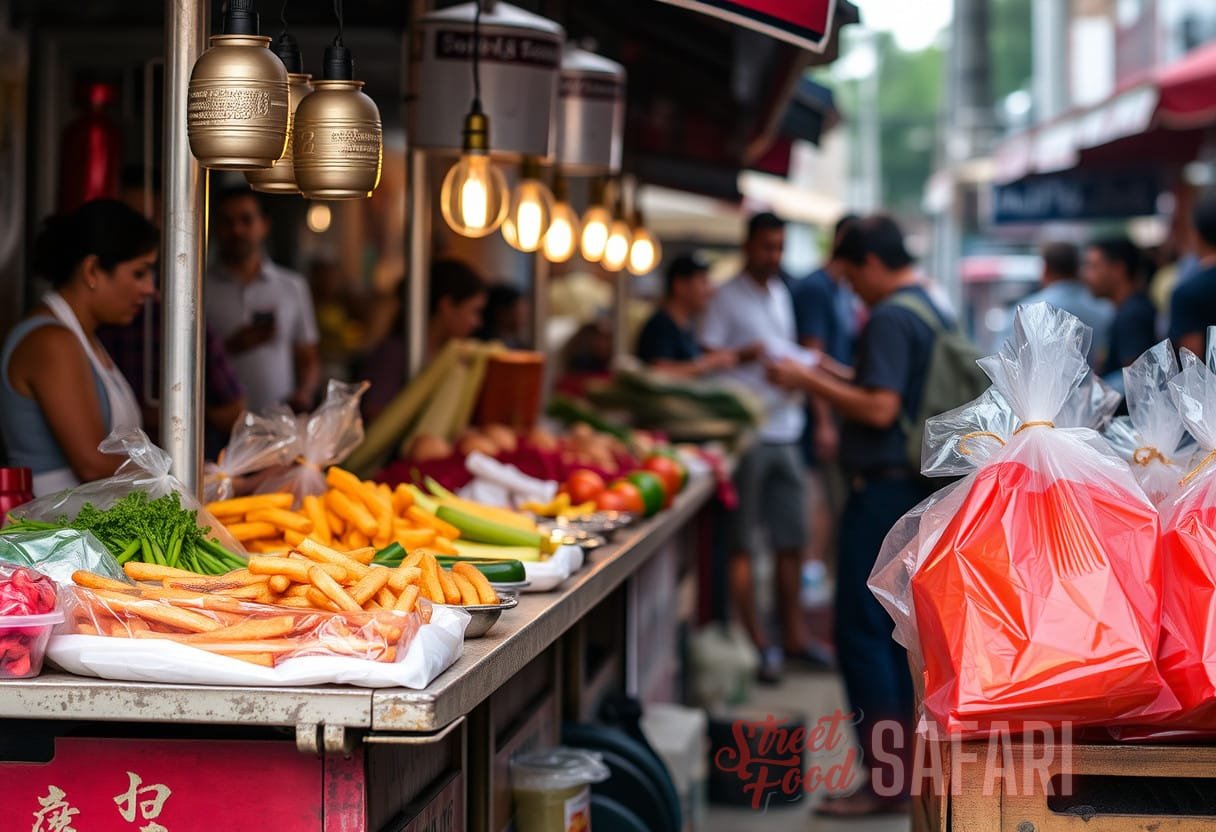Introduction
Street food has been a culinary phenomenon for centuries, offering a cornucopia of flavors and textures to tantalize the taste buds. It is at the intersection of traditional recipes, cultural influences, and culinary evolution that we find the global street eats that have captured the hearts and palates of food enthusiasts worldwide. In this article, we embark on a flavor-filled odyssey to unravel the fascinating cultural connections of street eats and explore how they have evolved over time, giving rise to a dynamic and diverse food culture.
Exploring the Origins of Street Eats
The origins of street food can be traced back to ancient civilizations, where it served as a convenient and affordable way for people to grab a quick meal on the go. The streets of ancient Rome were lined with food stalls and rolling carts, offering a variety of snacks and dishes to hungry citizens. Similarly, in ancient China, street vendors peddled steaming bowls of noodles and dumplings, while in the Middle East, falafel and kebabs were common street eats.
As trade routes expanded and cultures mixed, street food began to take on new flavors and techniques, reflecting the culinary influences of different regions. For example, the Silk Road brought spices from the Far East to the Mediterranean, resulting in the fusion of Chinese, Indian, Persian, and Arabic flavors in the street food of the region. This cross-pollination of culinary traditions laid the foundation for the global street eats we know and love today.
The Flavorful Journey of Global Street Eats
The journey of global street eats begins with a melting pot of cultural influences and authentic recipes, which have been passed down through generations. These recipes are often the embodiment of a region’s history, traditions, and local produce. From the savory satay of Southeast Asia to the spicy tacos of Mexico, each street eat tells a story of its birthplace and the people who have lovingly crafted it.
1. A Street Eats Journey: Exploring the Culinary Delights of Global Street EatsFor example, in Thailand, street food is an intrinsic part of the culinary landscape. Food stalls dot every corner, offering a plethora of dishes, from aromatic curries to fiery stir-fries. The unique balance of sweet, sour, salty, and spicy flavors in Thai street food reflects the country’s cultural heritage and is a testament to the skill of its street food vendors.
2. The Street Cuisine Revolution: Exploring the Dynamic Evolution of Food CultureSimilarly, in Mexico, street food is deeply rooted in tradition. The humble taco, a staple of Mexican street eats, has evolved over the centuries, incorporating new ingredients and techniques while retaining its soulful simplicity. From the classic al pastor, marinated pork cooked on a spit, to the crunchy carnitas, slow-cooked braised pork, every bite tells a story of Mexico’s rich culinary history.
The Role of Migration in Culinary Evolution
One of the key drivers of culinary evolution is migration. As people move across borders, they bring their culinary traditions with them, leading to the integration of new flavors and techniques in the local street food scene. This cross-cultural pollination gives rise to exciting fusions and reinventions, creating a vibrant and dynamic food culture.
For example, in the United States, the influx of immigrants from different parts of the world has shaped the country’s street food landscape. The hot dog, an American street food icon, is believed to have its roots in German sausages brought over by European immigrants. Over time, it has evolved with regional variations such as the Chicago-style hot dog or the chili dog of the American Southwest.
In recent years, there has been a proliferation of food trucks in major cities across the globe, showcasing the diverse flavors of different cultures. These mobile eateries offer a platform for aspiring chefs and food entrepreneurs to experiment with fusion cuisines and innovative flavor combinations. The result is a culinary melting pot where global street eats continue to evolve and delight food lovers.
Technological Advancements and the Rise of Street Food

The advent of modern technology has revolutionized the street food industry, making it more accessible and widespread. Food trucks, equipped with state-of-the-art kitchens, have become a common sight in cities around the world, offering a wide range of gourmet street eats. These mobile kitchens often feature innovative menus, inspired by both traditional street food and contemporary culinary trends.
Social media platforms and online food communities have also played a significant role in the rise of street food. Instagram, in particular, has become a platform for street food vendors to showcase their mouth-watering creations and connect with food enthusiasts. The hashtag #streetfood has millions of posts, highlighting the popularity and global reach of this culinary phenomenon.
Moreover, technological advancements have led to an increased focus on food safety and hygiene in the street food industry. From food handling practices to food storage solutions, vendors are adopting best practices to ensure the quality and safety of their offerings. This has helped to overcome the perception that street food is unhygienic or unsafe, further fueling its popularity.
The Cultural Significance of Street Eats
Beyond the tantalizing flavors and vibrant colors, street eats hold a deeper cultural significance. They are a reflection of a region’s history, traditions, and social fabric. Street food is often deeply intertwined with local celebrations and festivals, where vendors showcase their most prized dishes.
In many cultures, street food is not just a means of sustenance but also a social activity. It brings communities together, creating a sense of camaraderie and shared experiences. From bustling night markets in Taiwan to lively food festivals in Italy, street eats provide a platform for people to connect, share stories, and celebrate their culinary heritage.
Preservation of Culinary Traditions
Street eats play a crucial role in preserving culinary traditions that might otherwise be lost in the face of globalization and modernization. Traditional street food recipes are often passed down through generations, ensuring that the flavors and techniques of a region’s past are not forgotten.
In some cases, street eats have even gained recognition from prestigious cultural institutions. The UNESCO Intangible Cultural Heritage list includes several street food traditions, such as the Mediterranean diet or the traditional Mexican cuisine. This recognition not only emphasizes the cultural significance of street food but also serves as a means of preserving and promoting these culinary traditions for future generations.
The Future of Global Street Eats
As the world becomes more connected, the future of global street eats looks promising. Street food vendors continue to innovate and experiment, pushing the boundaries of flavor and presentation. From artisanal ice cream sandwiches to gourmet popcorn, the global street food scene offers a never-ending array of culinary delights.
The rise of food tourism has also contributed to the popularity of street eats. Travelers seek out authentic food experiences that allow them to immerse themselves in the local culture. Street food provides an avenue for these immersive experiences, with vendors often sharing stories behind their dishes and engaging in lively exchanges with customers.
In conclusion, global street eats represent a fascinating fusion of flavors, cultural influences, and culinary evolution. From the ancient streets of Rome to the food trucks of modern cities, street food has stood the test of time and continues to captivate food enthusiasts worldwide. By exploring the cultural connections of street eats and understanding the evolution of food culture, we gain a deeper appreciation for the rich tapestry of flavors that make up the global street food landscape.
External link: https://en.wikipedia.org/wiki/Street_food

